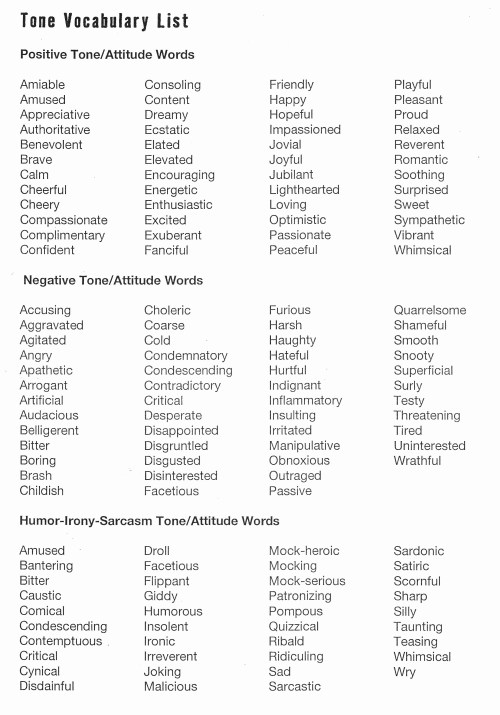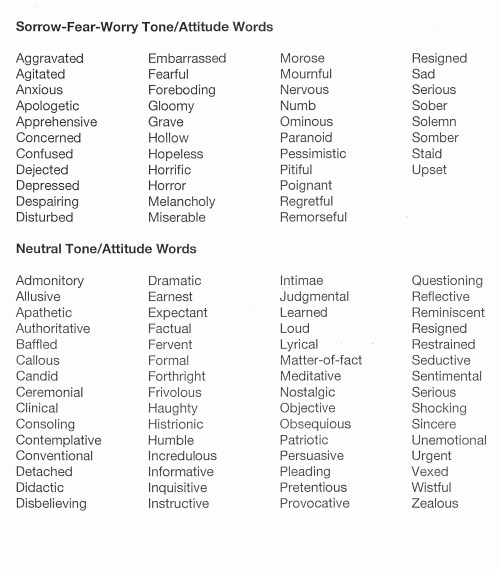Read, reblog, and resonate!
Writing Resources - Blog Posts
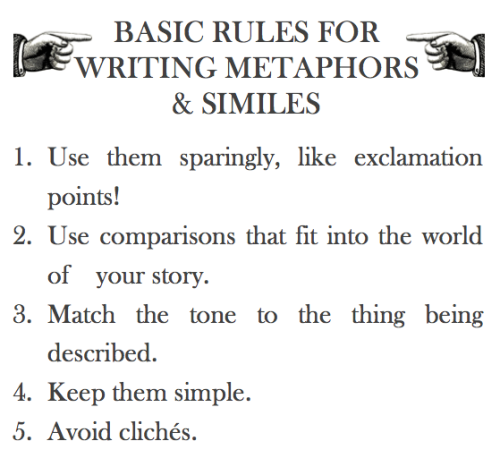
RULE #1: Use them sparingly.
Comparisons draw attention to themselves, like a single red tulip in a sea of yellow ones. They take the reader out of the scene for a moment, while you describe something that isn’t in it, like you’re pushing them out of the story. They require more thought than normal descriptions, as they ask the reader to think about the comparison, like an essay question in the middle of a multiple choice test. They make the image stand out, give it importance, a badge of honor of sorts.
Use too many comparisons and they become tedious.
Elevating every single description is like ending each sentence with an exclamation point. Eventually, the reader decides no one could possibly shout this much, and starts ignoring them.
For these reasons, you should only use metaphorical language when you really want to make an image stand out. Save them for important moments.
RULE #2: Use comparisons that fit into the world of your story.
If you’re writing from the point of view of a character who’s only ever lived in a desert, having that character say, “her look was as cold as snow” doesn’t make much sense. That character isn’t likely to have experienced snow, so it wouldn’t be a reference point to them. They’d be more likely to compare the look to a “moonless desert night” or something along those lines.
Using a comparison that ties to the character’s history or the setting of the story also do work to build the world of the story. It gives you a chance to show the reader exactly what your character’s reference points are, and builds the story’s world. If your reader doesn’t know that desert nights can get cold, this comparison informs both the things its describing: the other character’s look and the desert at night.
Here’s a metaphor from The Hitchhiker’s Guide to the Galaxy:
If you took a couple of David Bowies and stuck one of the David Bowies on the top of the other David Bowie, then attached another David Bowie to the end of each of the arms of the upper of the first two David Bowies and wrapped the whole business up in a dirty beach robe you would then have something which didn’t exactly look like John Watson, but which those who knew him would find hauntingly familiar.
He was tall and he was gangled.
This is a bizarre comparison, but it’s also a bizarre story. What’s more, David Bowie is known for his persona “Ziggy Stardust” and songs like “Space Oddity.” Bringing him up in a book about a man from Earth traversing the galaxy makes sense. What’s more it increases both of those aspects of the story: its ties to space and its bizarre-ness. The comparison unifies the story and the language being used to tell the story.
Using comparisons that fit into the world ensures that everything is working to help tell the story you want to tell.
RULE #3: Match the tone to the thing being described.
Or, match it to the way you want the thing being described to come across. It has to match what you want the reader to feel about the thing being described.
Here’s an example from Mental Floss’s “18 Metaphors & Analogies Found in Actual Student Papers” (although I think it’s actually from a bad metaphor writing contest):
She had a deep, throaty, genuine laugh, like that sound a dog makes just before it throws up.
You’re not imagining a laugh right now, are you? You’re imagining a dog throwing up. Whoever this girl is, you’re going to make sure never to tell a joke in front of her.
This is not getting the right point across.
Remember the David Bowies? Remember how the comparison was fun and bizarre, just like the tone of the book is fun and bizarre?
This is not David Bowies stacked on top of one another.
It’s not enough for a comparison to be accurate. It has to bring about the same emotions as the thing it’s describing.
If this is being told from the point of view of a character who hates the laughing character and we’re supposed to hate her and her laugh. It actually does work, but from the use of the word “genuine,” I don’t think this is the case.
Make sure you always pay attention to the tone of the comparison.
RULE #4: Keep them simple.
Don’t use a comparison that requires too much thought on the reader’s part. You never want anyone sparing even a moment on the question: “but how is x like y?”
Here’s another example from that Mental Floss list:
Long separated by cruel fate, the star-crossed lovers raced across the grassy field toward each other like two freight trains, one having left Cleveland at 6:36 p.m. traveling at 55 mph, the other from Topeka at 4:19 p.m. at a speed of 35 mph.
Again, this is a humorous example. It’s supposed to be bad, but many writers have made mistakes like it. They choose two images that don’t have enough in common for the reader to make an easy and obvious comparison between the two. Sometimes, the writer subconsciously acknowledges this, and expands the comparison to a paragraph, detailing the ways the two things are alike.
If you find yourself doing this, take a step back and ask yourself if this is really the best comparison to be using. The best comparisons are the simple ones. All the world’s a stage. Conscience is a man’s compass. Books are the mirrors of the soul.
What about that David Bowie quote, you ask? Douglas Adams broke this rule, but he broke it purposefully to get that bizarre quality to the language. He still avoids reader confusion, the reason for this rule, by bringing the comparison back to its point at the end: “he was tall and he was gangled.”
RULE #5: Avoid cliches.
The best comparisons are fresh ones. No one wants to hear that she had “skin as white as snow” and lips “as red as roses” anymore. The slight understanding it brings to the description isn’t worth the reader’s groans when they realize you just made them read that again.
A cliche is a waste of space on the page. It’s not going to be the memorable line you want it to be. It’s not going to awe the reader.
Good similes in metaphors require some creative thinking.
In the vein of rosy lips and snow-colored skin, here’s a fun example from Harry Potter and the Chamber of Secrets. It’s the poem that Ginny wrote for Harry on Valentine’s Day:
His eyes are as green as a fresh pickled toad,
His hair is as dark as a blackboard.
I wish he was mine, he’s really divine,
The hero who conquered the Dark Lord.
These aren’t comparisons you’re like to have come across before and their originality comes from rules #2 and #3. Rowling needed comparisons that fit in Ginny’s frame of reference. She also needed comparisons that were humorously bad, as they’re being recited by a grumpy creature dressed in a diaper, who is sitting on Harry’s ankles, forcing him to listen.
As a witch at school, blackboards and fresh pickled toads fit Ginny’s frame of reference. Neither are particularly known for being nice to look at, so they fit the tone, too.
Using her character, setting, and tone, using, in other words, her story, Rowling was able to create similes that are unique and memorable.
It’s the same thing Adams did with his Bowie analogy.
If you, too, use your story to inform your language, writing new and wonderful similes and metaphors should be just as simple.
:7c
Writing Tips Master Post
Character writing/development:
Character Arcs
Making Character Profiles
Character Development
Comic Relief Arc
Internal Conflict
Character Voices
Creating Distinct Characters
Suicidal Urges/Martyr Complex
Creating Likeable Characters
Writing Strong Female Characters
Writing POC Characters
Building Tension
Plot devices/development:
Intrigue in Storytelling
Enemies to Lovers
Alternatives to Killing Characters
Worldbuilding
Misdirection
Consider Before Killing Characters
Foreshadowing
Narrative:
Emphasising the Stakes
Avoid Info-Dumping
Writing Without Dialogue
1st vs. 2nd vs. 3rd Perspective
Fight Scenes (+ More)
Transitions
Pacing
Writing Prologues
Dialogue Tips
Writing War
Writing Cheating
Worldbuilding:
Worldbuilding: Questions to Consider
Creating Laws/Rules in Fantasy Worlds
Book writing:
Connected vs. Stand-Alone Series
A & B Stories
Writer resources:
Writing YouTube Channels, Podcasts, & Blogs
Online Writing Resources
Outlining/Writing/Editing Software
Writer help:
Losing Passion/Burnout
Overcoming Writer's Block
Fantasy terms:
How To Name Fantasy Races (Step-by-Step)
Naming Elemental Races
Naming Fire-Related Races
How To Name Fantasy Places
Ask games:
Character Ask Game #1
Character Ask Game #2
Character Ask Game #3
Miscellaneous:
1000 Follower Post
2000 Follower Poll
Writing Fantasy
Obsidian is one of my longtime faves for planning and worldbuilding, and Ellipsus is very staunchly anti-AI! Here's a link to a post about it:

So because I got a slight amount of motivation for writing(wild what a lung infection will do to you) I've decided to take it up again. But I am not going to be caught dead using google drive/docs.
Are there any good alternatives? Cause when I tried to find a software that didn't train AI I literally only got results on how to avoid people detecting AI use.
The symbolism of flowers
Flowers have a long history of symbolism that you can incorporate into your writing to give subtext.
Symbolism varies between cultures and customs, and these particular examples come from Victorian Era Britain. You'll find examples of this symbolism in many well-known novels of the era!
Amaryllis: Pride
Black-eyed Susan: Justice
Bluebell: Humility
Calla Lily: Beauty
Pink Camellia: Longing
Carnations: Female love
Yellow Carnation: Rejection
Clematis: Mental beauty
Columbine: Foolishness
Cyclamen: Resignation
Daffodil: Unrivalled love
Daisy: Innocence, loyalty
Forget-me-not: True love
Gardenia: Secret love
Geranium: Folly, stupidity
Gladiolus: Integrity, strength
Hibiscus: Delicate beauty
Honeysuckle: Bonds of love
Blue Hyacinth: Constancy
Hydrangea: Frigid, heartless
Iris: Faith, trust, wisdom
White Jasmine: Amiability
Lavender: Distrust
Lilac: Joy of youth
White Lily: Purity
Orange Lily: Hatred
Tiger Lily: Wealth, pride
Lily-of-the-valley: Sweetness, humility
Lotus: Enlightenment, rebirth
Magnolia: Nobility
Marigold: Grief, jealousy
Morning Glory: Affection
Nasturtium: Patriotism, conquest
Pansy: Thoughtfulness
Peony: Bashfulness, shame
Poppy: Consolation
Red Rose: Love
Yellow Rose: Jealously, infidelity
Snapdragon: Deception, grace
Sunflower: Adoration
Sweet Willian: Gallantry
Red Tulip: Passion
Violet: Watchfulness, modesty
Yarrow: Everlasting love
Zinnia: Absent, affection
If you guys are like me, and you struggle a little with describing locations, can I suggest…

as a lifesaver.
When your Character...
Gets into: A Fight ⚜ ...Another Fight ⚜ ...Yet Another Fight
Hates Someone ⚜ Kisses Someone ⚜ Falls in Love
Calls Someone they Love ⚜ Dies / Cheats Death ⚜ Drowns
is...
A Child ⚜ Interacting with a Baby/Child ⚜ A Genius ⚜ A Lawyer
Beautiful ⚜ Dangerous ⚜ Drunk ⚜ Injured ⚜ Shy
needs...
A Magical Item ⚜ An Aphrodisiac ⚜ A Fictional Poison
To be Killed Off ⚜ To Become Likable ⚜ To Clean a Wound
To Find the Right Word, but Can't ⚜ To Say No ⚜ A Drink
loves...
Astronomy ⚜ Baking ⚜ Cooking ⚜ Cocktails ⚜ Food ⚜ Oils
Dancing ⚜ Fashion ⚜ Gems ⚜ Mythology ⚜ Numbers
Roses ⚜ Sweets ⚜ To Fight ⚜ Wine ⚜ Wine-Tasting ⚜ Yoga
has/experiences...
Allergies ⚜ Amnesia ⚜ Bereavement ⚜ Bites & Stings ⚜ Bruises
Caffeine ⚜ CO Poisoning ⚜ Color Blindness ⚜ Food Poisoning
Injuries ⚜ Jet Lag ⚜ Mutism ⚜ Pain ⚜ Poisoning
More Pain & Violence ⚜ Viruses ⚜ Wounds
[these are just quick references. more research may be needed to write your story...]
So... I found this and now it keeps coming to mind. You hear about "life-changing writing advice" all the time and usually its really not—but honestly this is it man.
I'm going to try it.

can wait to use this for evil deeds
Resources For Writing Sketchy Topics

Medicine
A Study In Physical Injury
Comas
Medical Facts And Tips For Your Writing Needs
Broken Bones
Burns
Unconsciousness & Head Trauma
Blood Loss
Stab Wounds
Pain & Shock
All About Mechanical Injuries (Injuries Caused By Violence)
Writing Specific Characters
Portraying a kleptomaniac.
Playing a character with cancer.
How to portray a power driven character.
Playing the manipulative character.
Portraying a character with borderline personality disorder.
Playing a character with Orthorexia Nervosa.
Writing a character who lost someone important.
Playing the bullies.
Portraying the drug dealer.
Playing a rebellious character.
How to portray a sociopath.
How to write characters with PTSD.
Playing characters with memory loss.
Playing a pyromaniac.
How to write a mute character.
How to write a character with an OCD.
How to play a stoner.
Playing a character with an eating disorder.
Portraying a character who is anti-social.
Portraying a character who is depressed.
How to portray someone with dyslexia.
How to portray a character with bipolar disorder.
Portraying a character with severe depression.
How to play a serial killer.
Writing insane characters.
Playing a character under the influence of marijuana.
Tips on writing a drug addict.
How to write a character with HPD.
Writing a character with Nymphomania.
Writing a character with schizophrenia.
Writing a character with Dissociative Identity Disorder.
Writing a character with depression.
Writing a character who suffers from night terrors.
Writing a character with paranoid personality disorder.
How to play a victim of rape.
How to play a mentally ill/insane character.
Writing a character who self-harms.
Writing a character who is high on amphetamines.
How to play the stalker.
How to portray a character high on cocaine.
Playing a character with ADHD.
How to play a sexual assault victim.
Writing a compulsive gambler.
Playing a character who is faking a disorder.
Playing a prisoner.
Portraying an emotionally detached character.
How to play a character with social anxiety.
Portraying a character who is high.
Portraying characters who have secrets.
Portraying a recovering alcoholic.
Portraying a sex addict.
How to play someone creepy.
Portraying sexually/emotionally abused characters.
Playing a character under the influence of drugs.
Playing a character who struggles with Bulimia.
Illegal Activity
Examining Mob Mentality
How Street Gangs Work
Domestic Abuse
Torture
Assault
Murder
Terrorism
Internet Fraud
Cyberwarfare
Computer Viruses
Corporate Crime
Political Corruption
Drug Trafficking
Human Trafficking
Sex Trafficking
Illegal Immigration
Contemporary Slavery
Black Market Prices & Profits
AK-47 prices on the black market
Bribes
Computer Hackers and Online Fraud
Contract Killing
Exotic Animals
Fake Diplomas
Fake ID Cards, Passports and Other Identity Documents
Human Smuggling Fees
Human Traffickers Prices
Kidney and Organ Trafficking Prices
Prostitution Prices
Cocaine Prices
Ecstasy Pills Prices
Heroin Prices
Marijuana Prices
Meth Prices
Earnings From Illegal Jobs
Countries In Order Of Largest To Smallest Risk
Forensics
arson
Asphyxia
Blood Analysis
Book Review
Cause & Manner of Death
Chemistry/Physics
Computers/Cell Phones/Electronics
Cool & Odd-Mostly Odd
Corpse Identification
Corpse Location
Crime and Science Radio
crime lab
Crime Scene
Cults and Religions
DNA
Document Examination
Fingerprints/Patterned Evidence
Firearms Analysis
Forensic Anthropology
Forensic Art
Forensic Dentistry
Forensic History
Forensic Psychiatry
General Forensics
Guest Blogger
High Tech Forensics
Interesting Cases
Interesting Places
Interviews
Medical History
Medical Issues
Misc
Multiple Murderers
On This Day
Poisons & Drugs
Police Procedure
Q&A
serial killers
Space Program
Stupid Criminals
Theft
Time of Death
Toxicology
Trauma
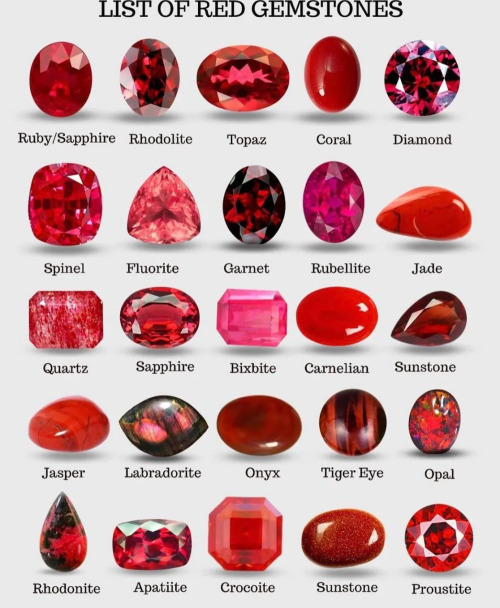

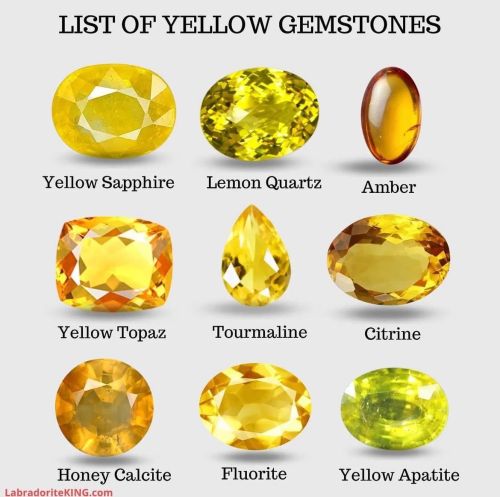
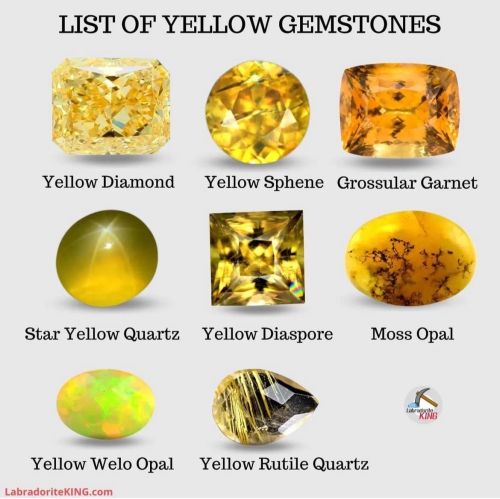
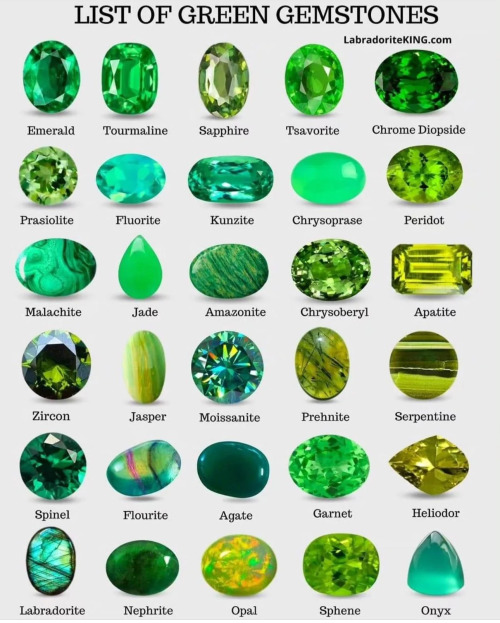
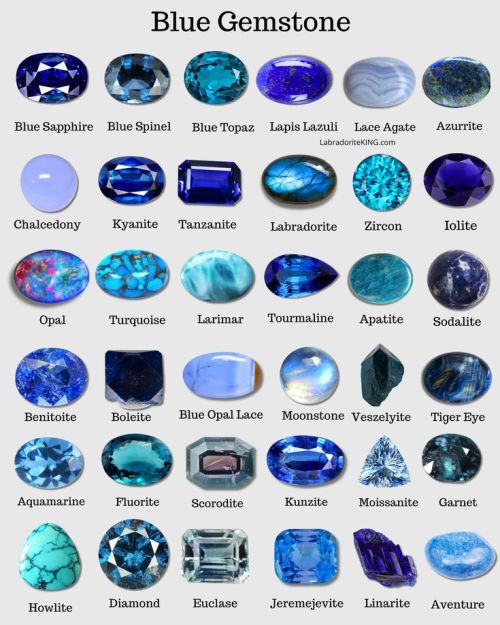
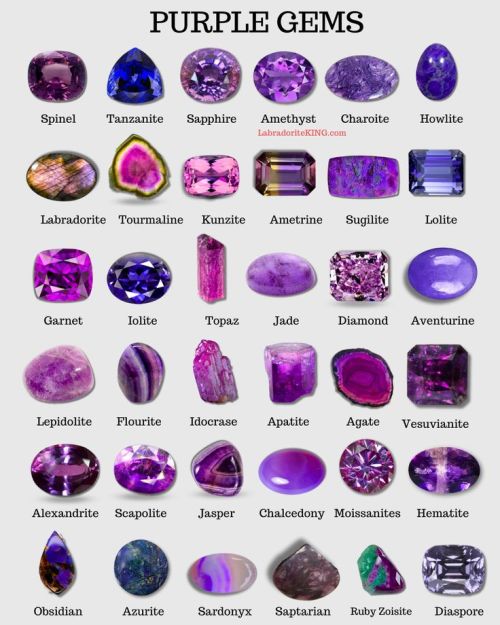

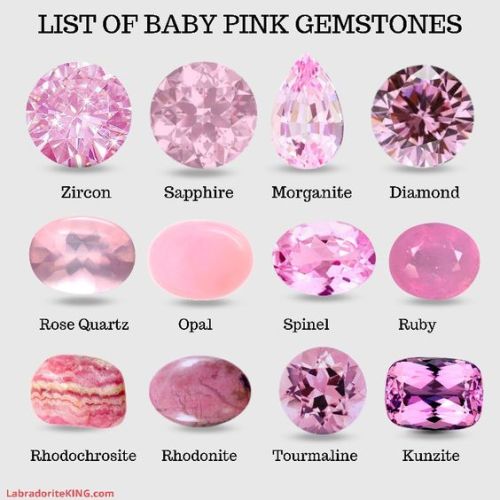
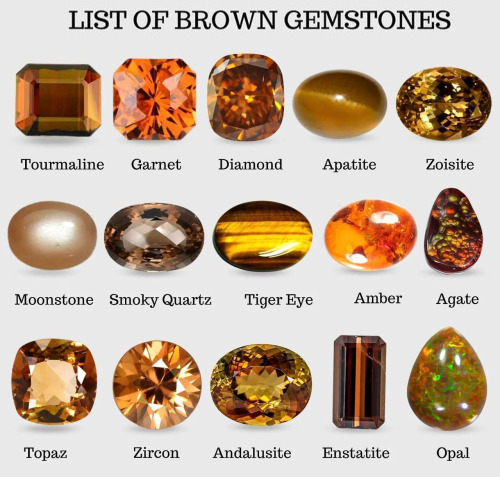
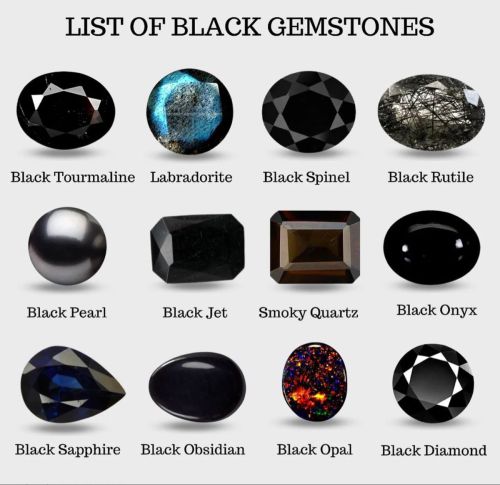
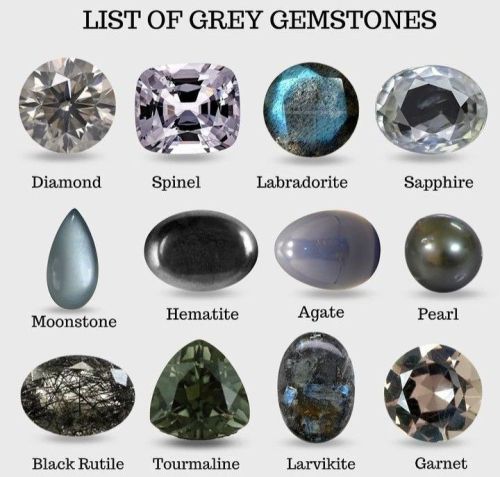
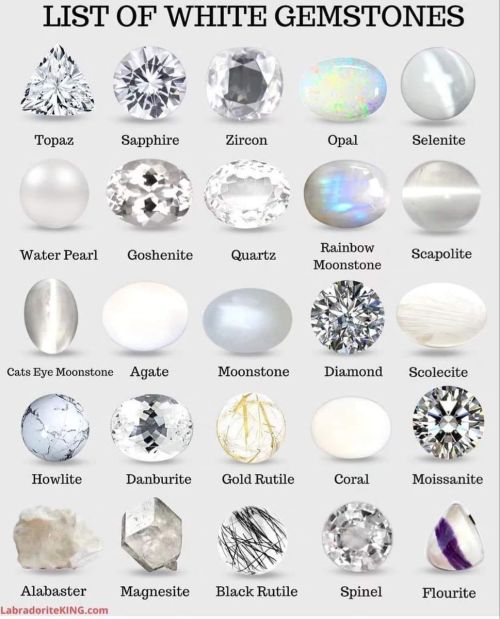
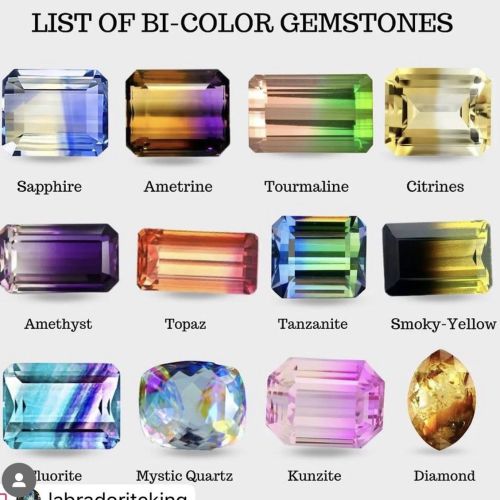
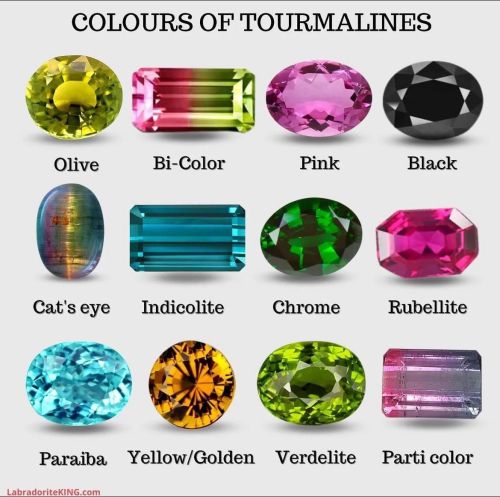
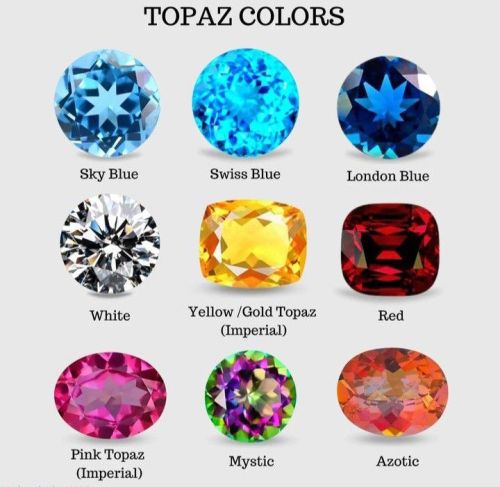
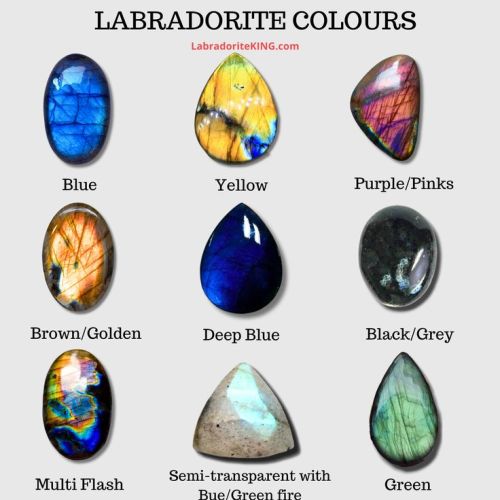
By LabradoriteKing on Pinterest
The Three Paragraphs That Sell Your Book (No Matter How You Publish It)

by Elijah J Mears
It is a truth universally acknowledged that an unpublished writer in possession of a good manuscript would rather peel off their own skin than market that manuscript. But alas, no matter how you plan to publish—whether you’re going for the long slog in the querying trenches or the lonely shout into the void of self-pub—if a book falls in a forest and no one is around to hear it, it does not, in fact, make a sale.

We’ve all been there. I’m there right now. As I wrap up what I hope will be one of the final pre-querying drafts of my own first novel, I’m also staring down the barrel of (gulp) submitting to the mortifying ordeal of being known.
For a long time, I hemmed and hawed over just how I wanted to go. I’ve got a lot of friends in the indie publishing space who’ve tempted my inner perfectionist with the promise of total control and freedom from the whims of agents and publishing houses. On the other hand, even though traditional publishing has changed a lot in the last few decades, it can still be hard to beat having the muscle of a Big Five imprint behind your book, assuming you can get it.
(And I mean, what speculative fiction novelist doesn’t fall asleep at night dreaming of a big fat publishing deal at Tor?)
No matter what path you choose for your novel, your best ally on the path to success is knowledge. But learning things once, frankly, isn’t enough in our industry. Publishing is constantly in flux—what worked well five years ago could be disastrous today. Any wisdom I could give you in this blog post might be dangerously out of date a month from now.
So instead, I want to share some of my teachers with you. These are voices I’ve come to trust during my own writing journey. Even if the specific resources I’m linking to end up going out of date, I know I can count on these fine folks to think fast, adapt, and steer me in the right direction.
These are the people I know you can trust to teach you about the most critical piece of copy you’ll need in your marketing arsenal, no matter which route you take.
That’s right. I’m talking about your book blurb. I mean pitch. Or, uh, your hook. Premise?
Maybe we should start by defining some terms.
Premises, book blurbs, and pitches: oh my!
If you’ve ever looked up how to write a back cover blurb or how to write a query letter, you’ve probably encountered a myriad of terms for what is fundamentally the same concept.
On the indie side of the table, I almost always see these three paragraphs called your “book blurb.” Although occasionally I see the less ceremonious moniker of “back cover copy.” This can still get confusing because traditional publishing often uses the word “blurb” to mean something else entirely. But my friends pretty universally use that word for these three paragraphs. If you self-publish, you’ll use this pitch on your back cover, your sales page on Amazon or Kobo or Itch or wherever else you sell, and basically anywhere you’re trying to convince someone to exchange money for a copy of your book.
For traditional publishing, we get a little messier. I like the word “pitch” for this piece of copy, mostly because it’s the word I first saw someone else use for it, and I’m sentimental like that. Nostalgia aside, there’s really no standard here—I’ve seen it called a hook, a story premise, a book description, and probably a few other things. But all these words mean the same thing: the three-ish paragraphs of your query letter where you try to get an agent to jump up and shout, “That sounds amazing! I simply must read it and sell it to a publishing house for a bajillion dollars.”
And while back cover blurbs and query pitches might appear in slightly different places, what I’ve come to realize as I’ve researched how to write them is… they’re basically the same thing.

What all these terms boil down to is this: if you’re going to get someone sufficiently invested in your book to either buy a copy or offer you representation, publishing as an industry has decided that the best way to do this is to condense your story down to a 200-300 word pitch that sets the scene, introduces your protagonist, their stakes and the conflict they’ll face, and leaves your audience with an understanding of why your novel is going to rock their world. Generally, this shakes out over three-ish paragraphs. Although, especially with your back cover copy for self-published books, you have some wiggle room.
Crucially, your blurb or pitch is not your synopsis, which covers the whole book. The key here, whether you’re putting your ebook together yourself in Vellum or tearing your hair out combing through QueryTracker, is that these three paragraphs really only cover the first 25% or so of your book. Their job isn’t to explain your entire plot. It’s just to convince an agent or prospective reader that yes, if they put in the time to read your novel, this is the way it’ll make them care and suck them in.
That said, there are some differences between the pitch and the synopsis. That’s where it’s really useful to have trusted resources you can rely on to teach you the basics and then keep going. So, without further adieu, let me introduce you to some of my trusted mentors on the hero’s journey of publishing.
Jessie Cuniffe of Book Blurb Magic
If there’s one person I can think of who knows a thing or two about writing indie book blurbs, it’s Jessie Cuniffe over at Book Blurb Magic. She’s written literally hundreds of blurbs and has boiled back cover copy down to an art and a science. What I love about Jessie’s resources is that, while she’s definitely running a business over at BBM and isn’t afraid to make a sales pitch for her services, she’s still very invested in teaching and empowering people to write blurbs on their own.
I happen to have taken her course on the subject (and can absolutely recommend it). But frankly, I’ve learned nearly as much just by paying attention to her social media and her newsletter. She emails more or less daily, and while there may be a sales pitch at the end, each one also contains valuable knowledge about the art of the blurb.
The other thing that’s really valuable about Jessie is that, because Jessie writes back cover copy for a living, she stays well on top of the pulse of an ever changing industry. In addition to general advice on blurb-writing, I can always count on her newsletter and socials to keep me apprised of what’s current and upcoming, like the rise of first person blurbs in the romance genre, or the trend toward shorter, more efficient blurbs as people’s attention spans shrink and our time becomes more precious.
You can find Jessie dispensing knowledge and hot takes over on her Threads account. I can also recommend signing up for her newsletter, which includes a free “Anatomy of a Book Blurb” cheat sheet.
Lewis Jorstad of The Novel Smithy
So, a very short story: when I first decided I wanted to get serious about finally writing a novel like I’d always said I wanted to (this was the middle of COVID, everyone was doing it), Lewis’ blog over at The Novel Smithy was the first resource I stumbled across when I asked Google, “Ok, how do I do that?” Honestly, his blog is full of lots of advice on the entire writing process, but for our purposes, I want to especially highlight his excellent post on how to write a back cover blurb.
The reason I like this resource so much—and, frankly, all of Lewis’ resources— is because it’s so darn simple. Lewis is an excellent teacher who is great at explaining difficult concepts in ways that make my brain go, “Oh, of course! Why didn’t I realize it was that simple?” Plus, he always provides strong real-world examples of the concepts he’s explaining so that it’s easy to see how craft concepts apply to reality.
Alyssa Matesic on YouTube

Let’s dive headfirst into our first resource focused more on the querying side of things than on back cover copy. Alyssa Matesic is a publishing industry professional and developmental editor who has handled hundreds of queries during her time in the publishing industry. I’m a huge fan of her free forty-minute query letter course on YouTube (as well as her other videos), which I watched and then immediately ran to strengthen my own draft query of my work-in-progress novel. While the video is meant to cover the entire query, it focuses mainly on the pitch section because the pitch takes up so much of any query’s word count.
Something I thought was really strong about this video course was that a significant chunk of its runtime is spent walking through several different versions of a query for the same book. I thought this was really helpful for looking at my own pitch and identifying possible areas of weakness because Alyssa’s video didn’t just show several examples of weak pitches. It also shows how you can improve on the weaknesses in your pitch over successive drafts.
Janet Reid of Query Shark
This is the odd one out of my resources because, unfortunately, Janet Reid (may her memory be a blessing) passed away last year. Unlike the other teachers on this list, as publishing continues to change, her website won’t be able to keep up with the times. That said, over the years, Query Shark published and evaluated hundreds of query letters. And it’s still hands down the best resource I know for getting the gist of how queries work, including the pitch section.
Janet spent more than twenty years as a literary agent in New York, and Query Shark was one of many ways she gave back to the publishing community. Combing through her archives, you’ll find hundreds and hundreds of query letters with Janet’s editorial feedback on what is or isn’t working. Even as publishing changes, I suspect the fundamentals of what makes a good query letter will remain mostly the same, and many of Janet’s query critiques focused on helping authors get their story onto the page.
If you’re anything like me, you’ll lose hours reading through Janet’s archives. But you’ll come out the other side with a much clearer sense of what it is that really makes a standout query, especially how to write a pitch that can sell your book.
Find Janet’s pearls of wisdom (and snark) at QueryShark.blogspot.com.
Jane Friedman of, well, she’s Jane Friedman
Last but absolutely not least, is Jane Friedman. The former President and CEO of HarperCollins has basically made her name synonymous with keeping up with what’s happening in the publishing industry. Best practices for pitches, queries, back cover copy, and everything else is absolutely included with that. I could probably write several articles just about the different resources she has available. But thankfully, she’s compiled her best stuff into one friendly resource hub that you should absolutely check out.
The most useful things here for those of us who are learning about pitches (Jane uses “story premise” and “hook” for these—as I said, this industry is terrible about consistent terminology) are the story premise and hook problems pages. She also has an entire category on her blog for queries and synopses that is well worth a read. There are ample resources on self-publishing as well, including a guest post on back cover copy that—even if it never quite says it explicitly—does a good job of showcasing that your query pitch and your back cover blurb are very, very similar things.
These teachers have done wonders for me. As I get ready to start querying my own novel, I know that my pitch will be stronger because of having their advice and wisdom. If things change down the road, and I decide that self-publishing is ultimately the right path… I’ll be able to take that leap knowing that one of my most important pieces of marketing copy is basically already written. So I hope that, whatever publishing path you choose to take, these resources will help you to feel empowered and ready to take on the next step in your writing journey with confidence.
Source: The Three Paragraphs That Sell Your Book (No Matter How You Publish It)
Bam!!!!
“Here's how to write a mystery novel: at the beginning you tell a lie, and by the end you tell the truth.” — Gregory McDonald
Writing Tips Master Post
Character writing/development:
Character Arcs
Making Character Profiles
Character Development
Comic Relief Arc
Internal Conflict
Character Voices
Creating Distinct Characters
Suicidal Urges/Martyr Complex
Creating Likeable Characters
Writing Strong Female Characters
Writing POC Characters
Building Tension
Plot devices/development:
Intrigue in Storytelling
Enemies to Lovers
Alternatives to Killing Characters
Worldbuilding
Misdirection
Consider Before Killing Characters
Foreshadowing
Narrative:
Emphasising the Stakes
Avoid Info-Dumping
Writing Without Dialogue
1st vs. 2nd vs. 3rd Perspective
Fight Scenes (+ More)
Transitions
Pacing
Writing Prologues
Dialogue Tips
Writing War
Writing Cheating
Worldbuilding:
Worldbuilding: Questions to Consider
Creating Laws/Rules in Fantasy Worlds
Book writing:
Connected vs. Stand-Alone Series
A & B Stories
Writer resources:
Writing YouTube Channels, Podcasts, & Blogs
Online Writing Resources
Outlining/Writing/Editing Software
Writer help:
Losing Passion/Burnout
Overcoming Writer's Block
Fantasy terms:
How To Name Fantasy Races (Step-by-Step)
Naming Elemental Races
Naming Fire-Related Races
How To Name Fantasy Places
Ask games:
Character Ask Game #1
Character Ask Game #2
Character Ask Game #3
Miscellaneous:
1000 Follower Post
2000 Follower Poll
Writing Fantasy
How to Plot A Complex Novel in One Day
Now first, I have to say, that the plot you’re able to come up with in one day is not going to be without its flaws, but coming up with it all at once, the entire story unfolds right in front of you and makes you want to keep going with it. So, where to begin?
What is your premise and basic plot? Pick your plot. I recommend just pulling one from this list. No plots are “original” so making yours interesting and complicated will easily distract from that fact, that and interesting characters. Characters will be something for you to work on another day, because this is plotting day. You’ll want the main plot to be fairly straight forward, because a confusing main plot will doom you if you want subplots.
Decide who the characters will be. They don’t have to have names at this point. You don’t even need to know who they are other than why they have to be in the story. The more characters there are the more complicated the plot will be. If you intend to have more than one subplot, then you’ll want more characters. Multiple interconnected subplots will give the illusion that the story is very complicated and will give the reader a lot of different things to look at at all times. It also gives you the chance to develop many side characters. The plot I worked out yesterday had 13 characters, all were necessary. Decide their “roles” don’t bother with much else. This seems shallow, but this is plot. Plot is shallow.
Now, decide what drives each character. Why specifically are they in this story? You can make this up. You don’t even know these characters yet. Just so long as everyone has their own motivations, you’re in the clear.
What aren’t these characters giving away right off the bat? Give them a secret! It doesn’t have to be something that they are actively lying about or trying to hide, just find something that perhaps ties them into the plot or subplot. This is a moment to dig into subplot. This does not need to be at all connected to their drive to be present in the story. Decide who is in love with who, what did this person do in the 70’s that’s coming back to bite them today, and what continues to haunt what-his-face to this very day. This is where you start to see the characters take shape. Don’t worry much about who they are or what they look like, just focus on what they’re doing to the story.
What is going to change these characters? Now this will take some thinking. Everyone wants at least a few of the characters to come out changed by the end of the story, so think, how will they be different as a result of the plot/subplot? It might not be plot that changes them, but if you have a lot of characters, a few changes that are worked into the bones of the plot might help you.
Now list out the major events of the novel with subplot in chronological order. This will be your timeline. Especially list the historical things that you want to exist in backstory. List everything you can think of. Think about where the story is going. At this point, you likely haven’t focused too much on the main plot, yeah, it’s there, but now really focus on the rising actions, how this main plot builds its conflict, then the climactic moment. Make sure you get all of that in there. This might take a few hours.
Decide where to start writing. This part will take a LOT of thinking. It’s hard! But now that you’ve got the timeline, pick an interesting point to begin at. Something with action. Something relevant. Preferably not at the beginning of your timeline - you want to have huge reveals later on where these important things that happened prior are exposed. This is the point where you think about what information should come out when. This will be a revision of your last list, except instead of being chronological, it exists to build tension.
Once you’ve gotten the second list done, you’ve got a plot. Does it need work? Probably. But with that said, at this point you probably have no idea who half your characters are. Save that for tomorrow, that too will be a lot of work.
After you’ve plotted the loose structure of your novel from this, see my next post to work on character!
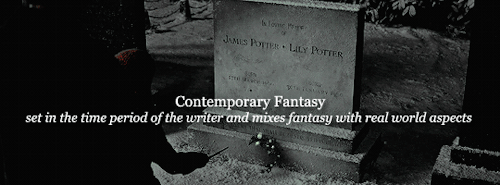
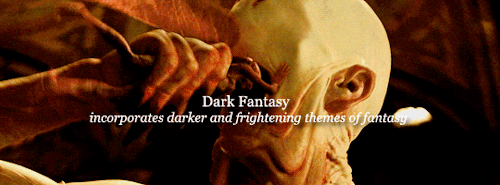
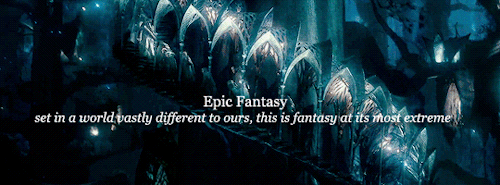
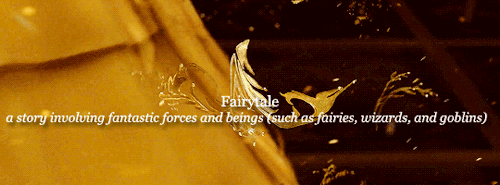
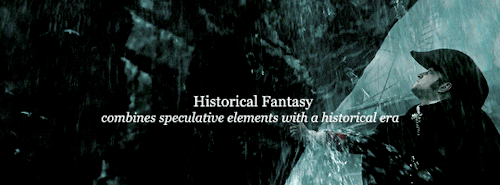
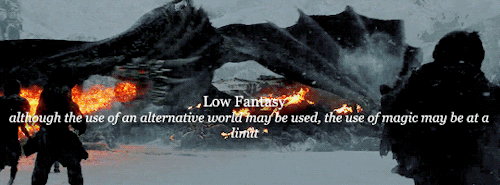
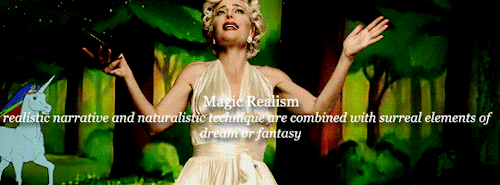
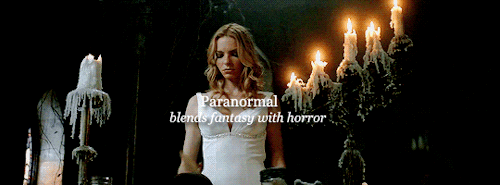

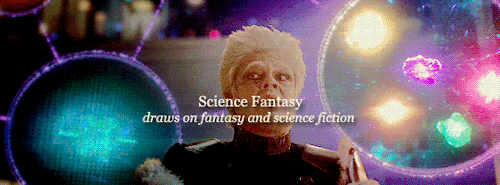
(Some) Of Fantasy’s Many Subgenres
(science fiction version)
“I like nonsense, it wakes up the brain cells. Fantasy is a necessary ingredient in living, It’s a way of looking at life through the wrong end of a telescope. Which is what I do, And that enables you to laugh at life’s realities.” -Dr. Seuss
Shows & Films depicted (from top to bottom): Harry Potter And The Deathly Hallows Part One, Pan’s Labyrinth, Lord Of The Rings: Fellowship Of The Ring, Beauty & The Beast, Jonathan Strange and Mr Norrell, Game Of Thrones, American Gods, Supernatural, Wings Of Desire, Guardians Of The Galaxy.


gothic fiction delicacies
𝖔𝖓𝖊. decaying setting
haunted houses, castles with secret passages/rooms, trapdoors, mazes, labyrinths, closed doors, trick panels with hidden levers, dark or hidden staircases, added flavor with darkness, uneven floors, branchings, claustrophobia, echoes of unusual sounds.
𝖙𝖜𝖔. supernatural beings or monsters
time of great discovery and exploration in the fields of science, religion, and industry; revere and question the existence of a higher power; ghosts, death and decay, deviant forms of humans: vampires, zombies, wolfmen
𝖙𝖍𝖗𝖊𝖊. curses or prophecies
obscure, partial, confusing prophecies and curses, undecipherable maps and house plans
𝖋𝖔𝖚𝖗. omens or portents
disturbing dreams, phenomenons, imitation thoughts, foreshadowing, statues falling, paintings ripped and staring back, windows tapping at night, dark curtains caught in the wind
𝖋𝖎𝖛𝖊. a suspenseful and mysterious atmosphere
fear enhanced by the unknown, inexplicable murders, mutilated bodies, mounted corpses, raised suspense, mysterious invitations, surreal appearances, blend between imagination and reality
𝖘𝖎𝖝. heroes in distress
appeal to the pathos and sympathy of the reader, events that leave one fainting, terrified, screaming, and/or sobbing; lonely, pensive, oppressed hero/heroine; pronounced sufferings, abandoned with no protection, “stay here, I’ll be right back.”
𝖘𝖊𝖛𝖊𝖓. tyrannical antagonist
power as king or queen, lord or mistress of the manor, forcing the intolerable, supernatural/paranormal strength, poisonous seduction, irresistable charm
𝖊𝖎𝖌𝖍𝖙. light and dark interplay
shades of grey or blood-red colors, blood as visual spectacle, blood stains, red roses, candle-light, violet night, silver moon, household silver
𝖓𝖎𝖓𝖊. intense emotions
madness - strange or troubling events that, while logical, seem to originate from unexpected forces; repressed fears & desires, memory of past sin, terror, sorrow, anger, feeling of impending doom
𝖙𝖊𝖓. metonymy of gloom and horror
suggesting mystery, danger, supernatural; howling wind, blowing rain, doors grating on rusty hinges, sighs, moans, howls, eerie sounds, footsteps approaching, clanking chains, lights in abandoned rooms, gusts of wind blowing out lights, characters trapped in a room, doors suddenly slamming shut, ruins of buildings, baying of distant dogs or wolves, thunder and lightning, crazed laughter

Word Counter - Not only does it count the number of words you’ve written, it tells you which words are used most often and how many times they appear.
Tip Of My Tongue - Have you ever had a word on the tip of your tongue, but you just can’t figure out what it is? This site searches words by letters, length, definition, and more to alleviate that.
Readability Score - This calculates a multitude of text statistics, including character, syllable, word, and sentence count, characters and syllables per word, words per sentence, and average grade level.
Writer’s Block (Desktop Application) - This free application for your computer will block out everything on your computer until you meet a certain word count or spend a certain amount of time writing.
Cliche Finder - It does what the name says.
Write Rhymes - It’ll find rhymes for words as you write.
Verbix - This site conjugates verbs, because English is a weird language.
Graviax - This grammar checker is much more comprehensive than Microsoft Word, again, because English is a weird language.
Sorry for how short this is! I wanted to only include things I genuinely find useful. p>
WEBSITES FOR WRITERS {masterpost}
E.A. Deverell - FREE worksheets (characters, world building, narrator, etc.) and paid courses;
Hiveword - Helps to research any topic to write about (has other resources, too);
BetaBooks - Share your draft with your beta reader (can be more than one), and see where they stopped reading, their comments, etc.;
Charlotte Dillon - Research links;
Writing realistic injuries - The title is pretty self-explanatory: while writing about an injury, take a look at this useful website;
One Stop for Writers - You guys... this website has literally everything we need: a) Description thesaurus collection, b) Character builder, c) Story maps, d) Scene maps & timelines, e) World building surveys, f) Worksheets, f) Tutorials, and much more! Although it has a paid plan ($90/year | $50/6 months | $9/month), you can still get a 2-week FREE trial;
One Stop for Writers Roadmap - It has many tips for you, divided into three different topics: a) How to plan a story, b) How to write a story, c) How to revise a story. The best thing about this? It's FREE!
Story Structure Database - The Story Structure Database is an archive of books and movies, recording all their major plot points;
National Centre for Writing - FREE worksheets and writing courses. Has also paid courses;
Penguin Random House - Has some writing contests and great opportunities;
Crime Reads - Get inspired before writing a crime scene;
The Creative Academy for Writers - "Writers helping writers along every step of the path to publication." It's FREE and has ZOOM writing rooms;
Reedsy - "A trusted place to learn how to successfully publish your book" It has many tips, and tools (generators), contests, prompts lists, etc. FREE;
QueryTracker - Find agents for your books (personally, I've never used this before, but I thought I should feature it here);
Pacemaker - Track your goals (example: Write 50K words - then, everytime you write, you track the number of the words, and it will make a graphic for you with your progress). It's FREE but has a paid plan;
Save the Cat! - The blog of the most known storytelling method. You can find posts, sheets, a software (student discount - 70%), and other things;
I hope this is helpful for you!
(Also, check my blog if you want to!)
admin c-senpai, please, if it’s not a bother, can you please give us some writing tips? you’re so talented, I’m literally shocked, no joke, your writing is flawless!!!! The aesthetic??? On point
Anon, this is so lovely of you to say. Thank you!! It depends on what kind of writing you’re talking about as I find depending on the format or purpose, your approach and style can change dramatically to suit those needs. But in general, here are some things off the top of my head that have helped me over the years:

Continuar lendo
Smut prompts
Never tease me like that again.
I'm bored. Wanna play?
I want to kiss you everywhere.
Can I touch you?
Touch me and you lose.
You look beautiful. But I'm afraid you'd look more gorgeous with that dress off you.
You have no idea how much I want you right now.
I want you so bad...
Ugh,baby, I cant- please...
I can't help but have naughty thoughts when you when look like that.
You know,you make me feel so naughty.
You make such pretty sounds,my love .
How do you feel,baby?" I... feel... good... "
Tell me how it feels. It doesn't hurt does it ?
Are...you ok? Is this pace good enough?
I'm gonna do the type of things that happen in your dreams .
Mmm, so beautiful...
I can't help but wonder how your cute face would look when I finally touch you
You know, how about a little fun before we go to bed?
You're more than just a fling,my love.
Does doing these kind of things make us friends with benefits?
Just friends?! Do your friends make you feel hot and bothered like this? Do they make you moan like this?!
I love your body,baby.Everything you hate about it is what drives me crazy.
I'd love to love you all night,my love.
I love how excited you are .
Right now, I'd love your kisses on anywhere but my lips.
Gosh, why can't I get enough of your body?
I love seeing you so flustered.
You're safe with me,my love . You know I'd never hurt you .
You're so cute when you're nervous.
But baby,I want to play with you ~
See what a mess you've made me ?
I need you...
You like it when I touch you?
I want to make love to you.
It looks like you're ready for me,my love.
Tell me how much do you want me, my love?
I can't help but to be turned on by the sight of you
You don't have to be so shy around me, you know?
Don't tempt me.
I'm gonna do something very crazy but I know you're gonna love it.
You have been waiting long for this, haven't you?
Did I tell you to touch?
I'm going to mark all the parts I love to show you how beautiful you are.
I will never get tired of holding you./ Your body
Would you like to do it again?
Why can't I get enough of you?
We could... do it.
I want to make you feel so good,babe.
You're so beautiful...so,so beautiful...
Come here.
What if I told you I wanted you, right here. Right now?
I'm always in the mood to play,my love
You're mine , understand? Mine!
You know exactly what I want .
I love it when you're naughty like this.
Don't mind me, just enjoying the view.
I want you so badly...
Why are you covering up? I have already seen everything.
Let me show you how much I care about you.
How bad do you want me,my love?
I-I've never done this before so I'm afraid you have to guide me.
You're so adorable. Aww, don't hide your face/ don't cover up.
I-I want you to touch you too. Please remove the cuffs...
It's not going to hurt,is it?
Wet already? I see you're so eager,hm?
Seriously,when are you never horny?
Kneel.
Stop the teasing, please...
No,I'm supposed to make you feel good.
First person to become horny/turned on loses.
Don't you wanna feel good, baby?
50 Fight Scene Ideas
Two people fight without waking or disturbing a third person.
Someone uses an object that isn’t usually considered to be dangerous as an effective weapon.
It’s impossible to tell the real opponents from the ones who are illusions or holograms.
People fight in zero gravity.
People fight underwater.
People fight in a building that’s on fire.
Two people fight, and an unlikely bystander saves our main character.
Two people fight, but when a third person attacks our main character, his other opponent saves him.
Fortunately, his blood is also a weapon.
One of the fighters is drugged or drunk.
Someone’s trying to unmask the person who’s attacking him.
Someone finds out that she’s fighting the person she meant to join forces with or save.
Someone fights while wearing something that makes them appear the opposite of tough or intimidating.
They fight naked.
They fight in Times Square on New Year’s Eve.
A protester and counter-protester fight.
Someone shoves his opponent into a body of water, and then rescues him when it’s apparent he’ll drown.
Someone gets help from an animal.
A friend, co-worker, or ally suddenly attacks someone.
One person dumps a gallon of something over the other person’s head.
One person chokes the other with a computer cord.
One person chokes the other with a string of Christmas lights.
Someone defends herself from an attacker while driving at top speed.
They fight in a hospital, which makes it easy for the main character to patch himself up afterward.
Bullying the bartender or server was a mistake.
She knocks out two men with one move.
They fight in a locked closet.
He celebrates his victory too early.
Someone leaps from a considerable height to land on an opponent.
Someone breaks the rules of the duel.
Her opponent vaporizes before she can stab him.
He accidentally wounds a bystander.
Someone was only pretending to be knocked out.
Her weapon gets stuck.
Priceless objects get damaged in the brawl.
Someone uses a bed sheet in the struggle.
The fight is a ruse to distract people from what’s really going on.
Someone repeatedly tries to avoid the fight to no avail.
Someone takes refuge in a disgusting place.
He finds himself battling a creature he didn’t believe existed.
They fight on slick ice.
He fights three challengers in succession.
Her glasses get destroyed and she can barely see.
He steals his opponent’s car, not realizing his allies rigged it with an explosive.
Someone’s ridiculous move or antic catches an opponent off guard.
Someone loses an opponent in the crowd and then finds her again.
A garden tool becomes a deadly weapon.
Someone hurls a shopping cart through the air.
Someone gets bashed with a crown or tiara.
He accidentally kills his opponent.
Words to describe someone’s voice
adenoidal (adj) : some of the sound seems to come through their nose.
appealing (adj): voice shows that you want help, approval, or agreement.
breathy (adj): with loud breathing noises.
booming (adj): very loud and attention-getting.
brittle (adj): if you speak in a brittle voice, you sound as if you are about to cry.
croaky (adj): they speak in a low, rough voice that sounds as if they have a sore throat.
grating (adj): a grating voice, laugh, or sound is unpleasant and annoying.
gravelly (adj): a gravelly voice sounds low and rough.
high-pitched (adj): true to its name, a high-pitched voice or sound is very high.
honeyed (adj): honeyed words or a honeyed voice sound very nice, but you cannot trust the person who is speaking.
matter-of-fact (adj): usually used if the person speaking knows what they are talking about (or absolutely think they know what they are talking about).
penetrating (adj): a penetrating voice is so high or loud that it makes you slightly uncomfortable.
raucous (adj): a raucous voice or noise is loud and sounds rough.
rough (adj): a rough voice is not soft and is unpleasant to listen to.
shrill (adj): a shrill voice is very loud, high, and unpleasant.
silvery (adj): this voice is clear, light, and pleasant.
stentorian (adj): a stentorian voice sounds very loud and severe.
strangled (adj): a strangled sound is one that someone stops before they finish making it.
strident (adj): this voice is loud and unpleasant.
thick (adj): if your voice is thick with an emotion, it sounds less clear than usual because of the emotion.
tight (adj): shows that you are nervous or annoyed.
toneless (adj): does not express any emotion.
wheezy (adj): a wheezy noise sounds as if it is made by someone who has difficulty breathing.
WORDS TO USE INSTEAD OF: LAUGH / LAUGHED / LAUGHING
Do you ever find yourself over-using the verb “laugh” (or “laughed” or “laughing”) in your writing? Try using these words instead:
giggle / giggled / giggling
chuckle / chuckled / chuckling
snicker / snickered / snickering
cackle / cackled / cackling
guffaw / guffawed / guffawing
grin / grinned / grinning
titter / tittered / tittering
snort / snorted / snorting
chortle / chortled / chortling
howl / howled / howling
roar / roared / roaring
cachinnate / cachinnated / cachinnating
snigger / sniggered / sniggering
mock / mocked / mocking
crack up / cracked up / cracking up
bust a gut / busted a gut / busting a gut
in stitches / in stitches / in stitches
burst into laughter / burst into laughter / bursting into laughter
die of laughter / died of laughter / dying of laughter
split one’s sides / split one’s sides / splitting one’s sides
(NOTE: Keep in mind that all of these words have slightly different meanings and are associated with different emotions/scenarios.)
50 Big Realizations for Your Characters
Keep in mind that a character might have a realization that turns out to be false.
If she met someone like the person she used to be, she’d feel nothing but envy.
If he met someone like the person he used to be, he’d feel nothing but scorn.
The person she believed was honorable was anything but.
His marriage or other relationship isn’t worth saving.
Ending his relationship was the biggest mistake of his life.
She made the exact same mistake her mother made.
He’s lived up to his father’s legacy.
Just because the rest of his family lived a certain way doesn’t mean he can’t expect better.
Although he makes a lot of excuses, his real problem is that he’s lazy.
She’s no longer faking it.
The end of the relationship wasn’t his fault at all.
The end of the relationship was all her fault.
What he thought was a bad break turned out to be a blessing.
What she thought was a dream come true turned out to be a nightmare.
She’s the friend that people call only when everyone else is busy.
There’s no way for him to help someone who’s ruining her life, because she isn’t inclined to change.
It doesn’t matter how competent he is at work; to succeed, he has to learn better social skills.
It’s okay to ask for help.
Living up to other people’s expectations isn’t working out at all, and it’s time for her to do what makes her happy.
His son, daughter, or parent is a bad person.
She no longer believes in the religion in which she was raised.
He’s embraced a new faith or has found his faith again.
The adults in her life are making it up as they go along, just like she is.
Being an adult doesn’t mean she has to abandon the things she loved as a kid.
To a large degree, he can choose to be happy.
She’s an addict.
He’s not as smart or talented as everyone told him he was when he was a kid.
Although people put her down all the time when she was a kid, she’s actually quite smart or very talented.
Although she thinks of herself as a sarcastic person with a heart of gold, she’s actually a real jerk.
He’s way too hard on his spouse or child.
She no longer has friends.
He’s actually made a real friend.
She’s fallen in love.
Although he has some athletic talent, he’ll never be a professional sports player.
Her wild daydream isn’t so wild… it’s possible that she could actually attain it.
He’s become obsessed with a topic or activity.
There’s nothing in her life that she’s really passionate about. She’s just drifting along.
Her child is now an adult.
What happened to him wasn’t his fault.
He loathes his chosen career.
He is never going to love her.
She is never going to get over him.
She’s missed out on a lot of things by giving up on herself too easily.
He’s missed out on a lot of things by being afraid to take action in the first place.
It’s time for him to quit and cut his losses.
She needs to make her family a priority.
He’s forgiven him.
She’s forgiven herself.
He needs to stop taking life so seriously.
Despite the heartbreak or loss she suffered, the best part of her life might still be ahead of her.
25 Natural Enemies Prompts
Conflict is at the heart of a good story, and some characters seem destined to butt heads. Of course, in some cases, the same characters may also have a lot in common. Some of the pairings on this list could be friends who bicker about a particular issue. Most of them could be true adversaries. They could even be enemies who wind up becoming friends or falling in love. Try writing about one of these pairs.
a vegan and a steakhouse owner
a warrior and a pacifist
soldiers of opposing armies
two people on opposing political campaigns
an evangelical minister and an atheist
a celebrity and a tabloid photographer
a moderator on a website and an Internet troll
a neat person and a slob
two people in love with the same person
a conservationist and a real estate developer
a cat lover and someone who’s scared of cats
a jock and a nerd
a doctor and a faith healer
a prince and an anti-monarchist
a modest person and a person with no inhibitions
owners of two competing shops or restaurants in a small town
a small business owner and the CEO of a big retail chain
a city lover and an outdoorsy type
a fugitive and a U.S. Marshal
an eternal optimist and a pessimist
two people vying for the same promotion at work
a district attorney and a public defender on the same case
a spendthrift and a miser
a school principal or headmaster and a juvenile delinquent
a human and an alien invader
25 Writing Prompts to Annoy or Anger Your Character
His coworker or neighbor keeps listening to awful music.
At the casino, she played the slot machine for an hour before giving up. The next person sat down and got a huge jackpot on the first try.
Someone who was caught breaking a rule, or the law, wasn’t properly punished.
Someone stole or copied his creative work, research, or invention.
Someone’s taking up two seats on public transit, so she has to stand.
There are no parking spaces, and someone double-parked.
Someone criticizes her cat, dog, or child.
His pet, child, partner, or roommate wakes him up at night for the third time in a row.
Her snack just got stuck in the vending machine.
Someone he knows keeps talking about himself or herself, dominating the conversation.
She’s wrongly accused of a misdeed, or even punished for it.
The zipper of his coat gets stuck.
She sees someone mistreating or threatening a vulnerable individual.
He gets home from the store with several bags of groceries, but not the one item he went there to get.
Someone cheats on her.
Someone steals his wallet, computer, or car.
There’s water on the bathroom floor and his socks get soaked.
She’s asked her partner or child a hundred times to stop doing a particular thing. They’ve promised to stop. They’re still doing it.
Someone eats food off his plate without asking.
Someone makes a cruel joke or insensitive remark.
Someone cuts ahead of her in line.
Someone defaces his property or damages his vehicle.
Someone interrupts her repeatedly.
Someone asks him too many personal questions.
A sick person coughs or sneezes on her.
25 Writing Prompts to Make Your Character Feel Lonely
Some of these things wouldn’t necessarily make a person feel lonely, but all of them could make someone feel that way.
He invites people to his birthday party, but all of them either cancel at the last minute or simply fail to show up.
People keep posting pictures from a party that she wasn’t invited to.
He doesn’t have anyone to celebrate Christmas or Valentine’s Day with.
She eats alone at a restaurant.
He sits alone at the movies or a baseball game.
He’s getting divorced, and their mutual friends are spending time with his wife and her new boyfriend.
She gets Christmas cards from married couples with pictures of them and their smiling children.
He’s in a group of people who have a lot of in-jokes he doesn’t understand.
She realizes that the woman she considers a best friend doesn’t feel the same way about her.
A group of his coworkers never invites him along to lunch.
She misses the dog who used to sleep at her feet.
He looks out of the window of his new apartment and wishes he’d never moved away from his hometown.
She comes across photos or cards from a family member who has since cut her off.
He’s in a foreign country where he doesn’t speak the language well— or at all.
She’s working a night shift all on her own.
He hears his partner or wife compliment someone else profusely, but s/he never compliments him.
He texted three people, and none of them texted him back.
She was excited to be invited to a party, only to realize it’s a “party” where you’re supposed to buy stuff.
He wakes up from a dream where he’s with his ex, his long-distance partner, his family, or a new group of friends, and he realizes it wasn’t real.
After buying a nice new outfit, she realizes she has no one to go out and do things with, so she has nowhere special to wear it.
He joined an online dating service and no one is showing any interest.
There’s a snack item in the vending machine that nobody ever wants, and she relates to it.
He plays board games with himself as a child…or as an adult.
She always asks other people about their health, their families, and their work. Nobody asks her how she’s doing.
He talks to a virtual assistant or computer program as though it’s a real person.

This is an ultimate masterlist of many resources that could be helpful for writers. I apologize in advance for any not working links. Check out the ultimate writing resource masterlist here (x) and my “novel” tag here (x).
✑ PLANNING
Outlining & Organizing
For the Architects: The Planning Process
Rough Drafts
How do you plan a novel?
Plot Development: Climax, Resolution, and Your Main Character
Plotting and Planing
I Have An Idea for a Novel! Now What?
Choosing the Best Outline Method
How to Write a Novel: The Snowflake Method
Effectively Outlining Your Plot
Conflict and Character within Story Structure
Outlining Your Plot
Ideas, Plots & Using the Premise Sheets
✑ INSPIRATION
Finding story ideas
Choosing ideas and endings
When a plot isn’t strong enough to make a whole story
Writing a story that’s doomed to suck
How to Finish What You Start: A Five-Step Plan for Writers
Finishing Your Novel
Finish Your Novel
How to Finish Your Novel when You Want to Quit
How To Push Past The Bullshit And Write That Goddamn Novel: A Very Simple No-Fuckery Writing Plan
✑ PLOT
In General
25 Turns, Pivots and Twists to Complicate Your Story
The ABCs (and Ds and Es) of Plot Development
Originality Is Overrated
How to Create a Plot Outline in Eight Easy Steps
Finding Plot: Idea Nets
The Story Goal: Your Key to Creating a Solid Plot Structure
Make your reader root for your main character
Creating Conflict and Sustaining Suspense
Tips for Creating a Compelling Plot
The Thirty-six (plus one) Dramatic Situations
Adding Subplots to a Novel
Weaving Subplots into a Novel
7 Ways to Add Subplots to Your Novel
Crafting a Successful Romance Subplot
How to Improve your Writing: Subplots and Subtext
Understanding the Role of Subplots
How to Use Subtext in your Writing
The Secret Life of Subtext
How to Use Subtext
Beginning
Creating a Process: Getting Your Ideas onto Paper (And into a Story)
Why First Chapters?
Starting with a Bang
In the Beginning
The Beginning of your Novel that isn’t the Beginning of your Novel
A Beginning from the Middle
Starting with a Bang
First Chapters: What To Include @ The Beginning Writer
23 Clichés to Avoid When Beginning Your Story
Start Writing Now
Done Planning. What Now?
Continuing Your Long-Format Story
How to Start a Novel
100 best first lines from novels
The First Sentence of a Book Report
How To Write A Killer First Sentence To Open Your Book
How to Write the First Sentence of a Book
The Most Important Sentence: How to Write a Killer Opening
Hook Your Reader from the First Sentence: How to Write Great Beginnings
Foreshadowing
Foreshadowing and the Red Hering
Narrative Elements: Foreshadowing
Foreshadowing and Suspense
Foreshadowing Key Details
Writing Fiction: Foreshadowing
The Literary Device of Foreshadowing
All About Foreshadowing in Fiction
Foreshadowing
Flashbacks and Foreshadowing
Foreshadowing — How and Why to Use It In Your Writing
Setting
Four Ways to Bring Settings to Life
Write a Setting for a Book
Writing Dynamic Settings
How To Make Your Setting a Character
Guide for Setting
5 Tips for Writing Better Settings
Building a Novel’s Setting
Ending
A Novel Ending
How to End Your Novel
How to End Your Novel 2
How to End a Novel With a Punch
How to End a Novel
How to Finish a Novel
How to Write The Ending of Your Novel
Keys to Great Endings
3 Things That End A Story Well
Ending a Novel: Five Things to Avoid
Endings that Ruin Your Novel
Closing Time: The Ending
✑ CHARACTER
Names
Behind the Name
Surname Meanings and Origins
Surname Meanings and Origins - A Free Dictionary of Surnames
Common US Surnames & Their Meanings
Last Name Meanings & Origins
Name Generators
Name Playground
Different Types of Characters
Ways To Describe a Personality
Character Traits Meme
Types of Characters
Types of Characters in Fiction
Seven Common Character Types
Six Types of Courageous Characters
Creating Fictional Characters (Masterlist)
Building Fictional Characters
Fiction Writer’s Character Chart
Character Building Workshop
Tips for Characterization
Fiction Writer’s Character Chart
Advantages, Disadvantages and Skills
Males
Strong Male Characters
The History and Nature of Man Friendships
Friendship for Guys (No Tears!)
‘I Love You, Man’ and the rules of male friendship
Male Friendship
Understanding Male Friendship
Straight male friendship, now with more cuddling
Character Development
P.O.V. And Background
Writing a Character: Questionnaire
10 Days of Character Building
Getting to Know Your Characters
Character Development Exercises
✑ STYLE
Chapters
How Many Chapters is the Right Amount of Chapters?
The Arbitrary Nature of the Chapter
How Long is a Chapter?
How Long Should Novel Chapters Be?
Chapter & Novel Lengths
Section vs. Scene Breaks
Dialogue
The Passion of Dialogue
25 Things You Should Know About Dialogue
Dialogue Writing Tips
Punctuation Dialogue
How to Write Believable Dialogue
Writing Dialogue: The Music of Speech
Writing Scenes with Many Characters
It’s Not What They Say …
Top 10 Tips for Writing Dialogue
Speaking of Dialogue
Dialogue Tips
Interrupted Dialogue
Two Tips for Interrupted Dialogue
Show, Don’t Tell (Description)
“Tell” Makes a Great Placeholder
The Literary Merit of the Grilled Cheese Sandwich
Bad Creative Writing Advice
The Ultimate Guide to Writing Better Than You Normally Do
DailyWritingTips: Show, Don’t Tell
GrammarGirl: Show, Don’t Tell
Writing Style: What Is It?
Detail Enhances Your Fiction
Using Sensory Details
Description in Fiction
Using Concrete Detail
Depth Through Perception
Showing Emotions & Feelings
Character Description
Describing Your Characters (by inkfish7 on DeviantArt)
Help with Character Development
Creating Characters that Jump Off the Page
Omitting Character Description
Introducing Your Character(s): DON’T
Character Crafting
Writer’s Relief Blog: “Character Development In Stories And Novels”
Article: How Do You Think Up Your Characters?
5 Character Points You May Be Ignoring
List of colors, hair types and hairstyles
List of words to use in a character’s description
200 words to describe hair
How to describe hair
Words used to describe the state of people’s hair
How to describe your haircut
Hair color sharts
Four Ways to Reveal Backstory
Words Used to Describe Clothes
Flashbacks
Using Flashbacks in Writing
Flashbacks by All Write
Using Flashback in Fiction
Fatal Backstory
Flashbacks as opening gambit
Don’t Begin at the Beginning
Flashbacks in Books
TVTropes: Flashback
Objects in the Mirror Are Closer Than They Appear: Flashback Techniques in Fiction
3 Tips for Writing Successful Flashbacks
The 5 Rules of Writing Effective Flashbacks
How to Handle Flashbacks In Writing
Flashbacks and Foreshadowing
Reddit Forum: Is a flashback in the first chapter a good idea?
Forum Discussing Flackbacks
P.O.V
You, Me, and XE - Points of View
What’s Your Point of View?
Establishing the Right Point of View: How to Avoid “Stepping Out of Character”
How to Start Writing in the Third Person
The Opposite Gender P.O.V.
LANGUAGE
How To Say Said
200 Words Instead of Said
Words to Use Instead of Said
A List of Words to Use Instead of Said
Alternatives to “Walk”
60 Synonyms for “Walk”
✑ USEFUL WEBSITES/LINKS
Grammar Monster
Google Scholar
GodChecker
Tip Of My Tounge
Speech Tags
Pixar Story Rules
Written? Kitten!
TED Talks
DarkCopy
Family Echo
Some Words About Word Count
How Long Should My Novel Be?
The Universal Mary Sue Litmus Test
Writer’s “Cheat Sheets”
Last but not least, the most helpful tool for any writer out there is Google!
